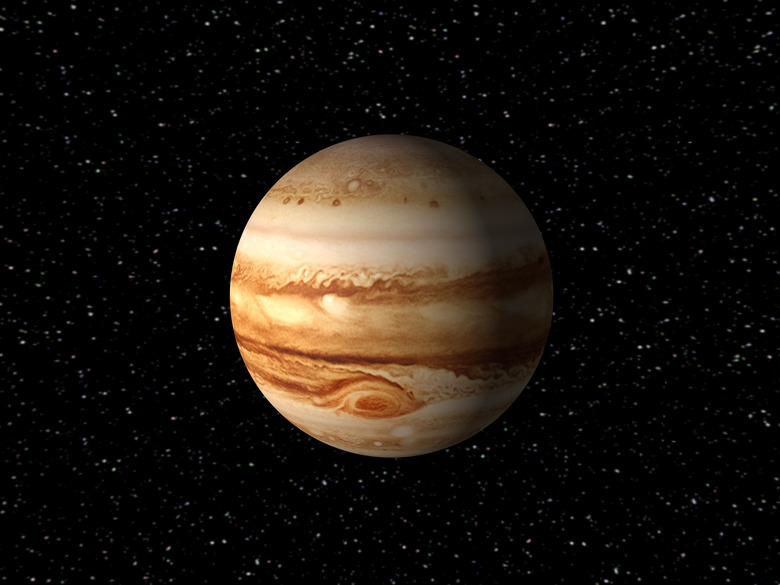Surprise! Jupiter Has 12 More Moons Than We Previously Thought
When scientists set out to search for evidence of a proposed planet beyond the orbit of Pluto, they didn't expect to discover moons instead – much less 12 of them.
But that's exactly what the research team, lead by astrologer Scott S. Sheppard the Carnegie Institution for Science, found in their year-long study which was published on Monday.
Using an uber-advanced "Dark Energy Camera" – a highly sensitive camera with a staggering 388-pound lens – they detected small objects orbiting around Jupiter. And after further examination to rule out the possibility that they could be asteroids, the researchers concluded they were a series of new moons.
So, what do we now know about Jupiter’s moons?
So, what do we now know about Jupiter's moons?
Even prior to this discovery, scientists knew Jupiter has several moons – and the Carnegie Institution for Science researchers bring the tally up to 79 moons.
They generally fall into one of three categories:
Galilean satellites
Galilean satellites
Jupiter's four largest moons are Europa, Io, Ganymede, and Callisto. They were the first moons discovered in space (besides earth's moon), observed by Galileo Galilei in 1610. Because they're so large, you can see them through the type of telescope you might have at home.
Three of the four (Ganymede, Europa and Io) have a layered structure like earth, and all seem to be made from a mixture of rock and ice.
Prograde moons
Prograde moons
This family of moons orbit in the same direction as Jupiter, and it's this characteristic that gives them their name. Prograde moons tend to orbit relatively close to Jupiter, forming an inner circle of moons.
Of the newly discovered moons, two are part of the same orbital grouping – a group of moons that follows are similar orbit – and might be fragments of a moon that previously broke apart.
Retrograde moons
Retrograde moons
Retrograde moons are ones that – you guessed it – orbit in the opposite direction to their planet. They tend to orbit farther away from Jupiter, forming an outer circle of moons.
Most of the newly-discovered moons fall into this category. The nine "new" moons seem to fall into three orbital groupings, which signal that they might be fragments of three larger moons that had broken apart.
The "oddball" moon
The "oddball" moon
Researchers also discovered a moon that doesn't fit into any of these categories**.** A tiny moon just over a half-mile in diameter, the oddball follows a prograde orbit pattern, which means it orbits in the same direction as Jupiter, it follows an odd orbit path that veers into retrograde moon "territory."
What do these findings mean?
What do these findings mean?
Discovering new moons, especially small moons that may have been parts of larger ones, tells us about the evolution of our solar system.
Scientists suggest, for example, that the inner prograde and outer retrograde orbiting patterns might have developed because moons that moved into the wrong "lane" were gradually destroyed though a series of collisions, creating the broken-apart series of retrograde moons in the process.
The new oddball might be proof; a small fragment of a past larger moon that was slowly broken down over time.
And who knows? It might just be one of many.
Cite This Article
MLA
Tremblay, Sylvie. "Surprise! Jupiter Has 12 More Moons Than We Previously Thought" sciencing.com, https://www.sciencing.com/surprise-jupiter-has-12-more-moons-than-we-previously-thought-13714026/. 19 July 2018.
APA
Tremblay, Sylvie. (2018, July 19). Surprise! Jupiter Has 12 More Moons Than We Previously Thought. sciencing.com. Retrieved from https://www.sciencing.com/surprise-jupiter-has-12-more-moons-than-we-previously-thought-13714026/
Chicago
Tremblay, Sylvie. Surprise! Jupiter Has 12 More Moons Than We Previously Thought last modified March 24, 2022. https://www.sciencing.com/surprise-jupiter-has-12-more-moons-than-we-previously-thought-13714026/
